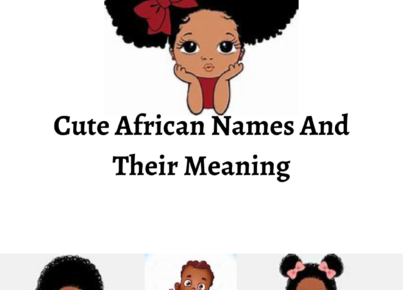[dropcap custom_class=”normal”]Writing system is an obvious or visible signs that are used to represent units of language in a systematic way. Writing systems differ in style and structure across many regions. Africa writing is said to be the world’s oldest and largest written languages known to mankind, evidence of such dates back to pre-historic time. Africa language is very unique and expressive in its form and forms today global history of literacy. The continent has contributed substantially to the global history of written languages of today, which has largely been ignored. [/dropcap]
The oldest written scripts ever discovered is the Proto Saharan, found by the Kharga oasis in what was known as Nubia in present day Sudan, so called by archaeologists. It dates from about 5000BC. Greek was not fully in use until 1400BC and Asian languages until 3000BC, African languages are several centuries older than Asian written forms.
Examples of ancient writing in Africa are the Ge’ez script of Ethiopia, the most ancient African script still in use, the Nsibidi of Nigeria, Adrinka of the Akan people of Ghana, the Tifnagh of the Tuareg people, and Val and Mende of Liberia and Sierra Leone, ( evidence of its Liberian/Sierra Leonean age date from Goundaka, Mali, that date to 3000 B.C). Scripts from the Proto Saharan of The Sudan, Aire Soroba of Mali, and many others.
Africans artists have included writing and graphic symbols into their art, and created some works of art which show genius, in objects dated from ancient times. Even today, African artists still use a diffusion of different forms of letters, words and symbols to create meanings which go back historically and merge ancient with modern.
The Eyptian Hieroglyphs” (4000 BC – 600 AD)
The word Medu Neter (MDW W NTR) literally means “tongue of God” or more loosely, “God’s words.” The English word, “hieroglyphs,” is derived from the Greek word, “hieroglyphikos,” which means “sacred engraving,” similar to the basic meaning of “Medu Neter.” This script is an elaborate a logosyllabic writing system in which symbols represent either words (concepts) and consonal phoenetic sounds, or both, depending on the context. The oldest known evidence for this writing system come from pre-dynastic pottery at Gerzeh (c. 4000 – 3500 BC; “Gerzean culture”), which is located about 100 miles south of Ha Ka Ptah (Giza), and from inscriptions found at Gebel Sheikh Suleiman (Wadi Halfa; 4000 – 3500 BC; “Nubian A-Group culture”) in so-called “Nubia.”
The Nigerian Nsibidi is an indigenous adaptable and fluid writing system of two dimensional signs, three dimensional forms of pictographs and ideographs and pantomimed gestures. The Nsibidi symbols are independent of Roman, Latin or Arabic influence and a completely indigenous creation of its African inventors. It is also known as Nsibiri, Nchibiddi or Nchibiddy. Nsibidi writing is indigenous to the Uguakima, Ebe or Uyanga ethnic groups of western Africa and dates back between 4000 and 5000 BC. It originated as an esoteric form of knowledge understood by a select group of people mostly members of a secret society in Southeastern Nigeria which some sources link to the Ejagham and later spread to Efik, Igbo, Ibibio, Efut, Annang and Banyang speaking areas.
In art work, politically, socially, and culturally, art work often had scripts/symbols to show how power acquired through the development of specialized knowledge and skills, such as healing with herbal medicine, could assist communication with the spirit world. Artists for example used symbolic materials to show power and to tell stories of ancient times.
Ancient Akan of Ghana called Adrinka
The dominance of colonialism and European languages, taught that Africa had no written languages, that African civilization was inferior, less refined, amongst other things, until they, the Europeans arrived on our shores; this is far from the truth. Africa has the world’s oldest and largest collection of written languages, known to man! This also goes to dispel the notion that Africa was uncivilised or barbaric before the Westerner came.
The Ge’ez script consist of 231 characters and it is used to communicate in several Ethiopic languages. It is an advanced syllabary script and of unquestionably one of the oldest writing systems in continuous use anywhere in the world. Original Ge’ez language is only used in Ethiopian and Eritrean Tawahedo Orthodox churches and the Beta Israel churches, The oldest known evidence of Ge’ez writing can be found on the Hawulti stela, which dates to the pre-Aksumite-era or roughly 800 BC.

Tifanagh (c. 3000 BC – present) rock paintings at Oued Mertoutek in southern Algeria show the earliest signs of the so-called “Lybico-Berber” or early Tifinagh writing system and date to 3000 BC. Tifanagh is still used by Amajegh (Tauregs), who mainly inhabit a vast area of West Africa, including present-day Mali, Niger, Chad, Burkina Faso, Southern Algeria and Southern Libya, are the only known group of Tamazight speakers who have used the Tifanagh script continuously since antiquity (in recent years, however, the larger Tamazight speaking community of the Sahara region have adopted use of the Tifanagh script).
Article by
Source: http://www.africaontheblog.com/








